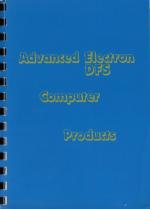Other Reviews Of Advanced Plus 4 For The Acorn Electron
Advanced Plus 4 (ACP/Pres)
A review by Roland Waddilove (Electron User)
Dynamic Duo: AP4 And Rombox Plus
A dynamic duo to extend the scope and computing power of your Electron
Advanced Plus 4 (ACP/Pres)
A review by Matthew Fifield (A&B Computing)
Advanced Plus 4 (ACP/Pres)
Bruce Smith looks at one of the latest releases for the Electron, the AP4 disc interface from Advanced Computer Products


 1st September 1987
1st September 1987
